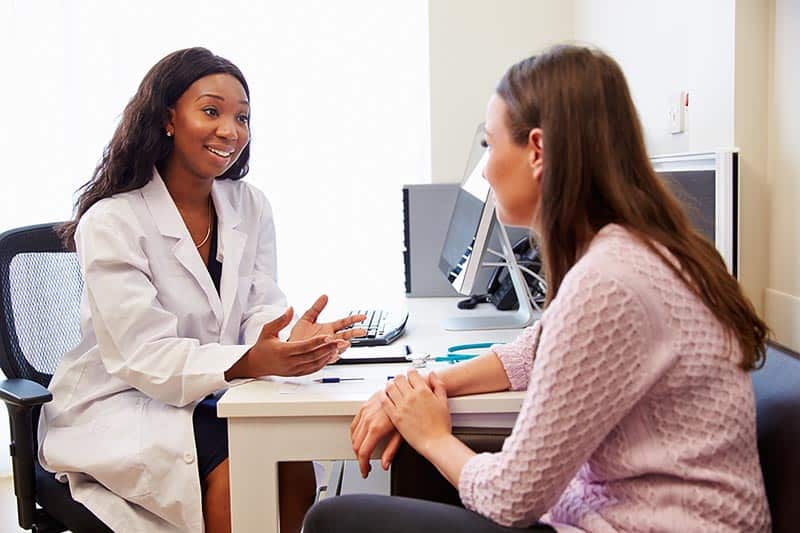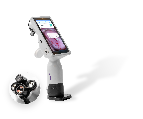Welcome to The Colpo Corner, where women’s health clinicians around the world provide their best practice tips with the medical community and patients. You are invited to join the discussion on Twitter or Facebook with the #ColpoCorner hashtag.
Colposcopy is a relatively straightforward procedure from a medical standpoint but for patients, it can be daunting. Patients can be worried by procedures that they don’t understand and can’t observe directly, especially those relating to the pelvic region. Physicians can approach patients in various ways to offer education and reassurance during the process. We spoke to NPs, family doctors, and OB/GYN’s to see how they handle this topic with their patients and what we can all learn from each other.
Develop a personal connection
Jonah Mink, M.D. is a family doctor, practicing at a private practice in Philadelphia. He added colposcopy to his regular practice to expand the range of services he offers to his patients and to reduce the chances of loss to follow-up after an abnormal Pap smear. He speaks with women before the procedure to explain what’s involved, the risks and benefits and what they can expect to experience during and after the procedure, giving them the benefit of face to face consultation. This allows him to develop a personal connection with patients immediately prior to the colposcopy.
He shares, “I start with the basics, why a colposcopy is necessary in the first place. I explain what it means to have a positive Pap smear… that a pathologist found abnormal cells when they examined the sample.” He explains that colposcopy is the next best step in the evaluation because it gives a better determination of how to proceed with treatment.
Dr. Mink stresses that a positive Pap does not mean that that the patient has cancer, but simply requires more testing. “Most of my patients already understand what their cervix is so the next step is to explain the biopsy process.” He suggests describing biopsy as a ‘little bite’ is taken out of the cervix. “I compare the process to having a mole removed because there may be some bleeding and slight discomfort.”
Read also: 8 ways to make colposcopy less scary for your patients >>
Encourage personal research
Clinical nurse practitioner, Mary Rubin, RN-C, Ph.D., CRNP, FAANP says that one of the benefits nurse practitioners have when performing colposcopy is the amount of time they are able to invest in patient education. “We often have more time with the patient per visit. I try to explain every step of the process.” Rubin stresses the importance of explaining the colposcope, to reassure patients that it will not be inserted, rather a strong light will shine to allow for the cervix to be seen clearly. “I find I need to reiterate that only a speculum will be inserted, similar to the gynecological exam that they are familiar with.”
While some physicians are wary to suggest that patients turn to the internet for medical knowledge, Rubin finds it gives patients an added sense of ownership over the process. “There are many excellent resources online. The ASCCP recommends a very clear interactive presentation made by the University of San Francisco.”
Share an image of their cervix
Kofi Effah, MD, heads the Cervical Cancer Prevention and Training Center at the Battor Catholic Hospital in Ghana. With typically only one interaction with a patient in a year, he needs to develop an instant connection with his patients. In a low resource setting, he also encounters different challenges in patient education. “Many of our patients do not know what or where their cervix is. We start by explaining the function of the cervix and showing them a picture of their own cervix.”
Dr. Effah and his team use the EVA Colposcopy System which uses imaging technology to offer high-resolution digital imaging. An image of the cervix appears on the touchscreen, allowing physicians to show patients an image of their cervix at the point of care. As with all patients around the world, once Dr. Effah’s patients understand the process they feel empowered to be an active participant in their medical journey.
Dr. Mink also stresses that the user-friendly setup and use of the EVA System allowed for an easy adoption of the device to incorporate colposcopy into his practice. “A family doctor has the advantage of having a deep relationship with patients. For the women I treat, being able to add colposcopy to our women’s health services was a big plus.” As a portable handheld device, the EVA also seems less threatening to patients who might have felt intimidated by the appearance of a traditional colposcope.
As physicians, patient care is our utmost priority. We can only stand to learn from our colleagues to enhance our own colposcopy practice and bring the best possible care to all of our patients.
Are you a women’s health provider?
What tips would you share with your colleagues for best practices in colposcopy and women’s health? Continue the conversation on Twitter or Facebook with the #ColpoCorner hashtag. You can also share your comments below, or if you’d like to contribute some ideas or an article to this section.







